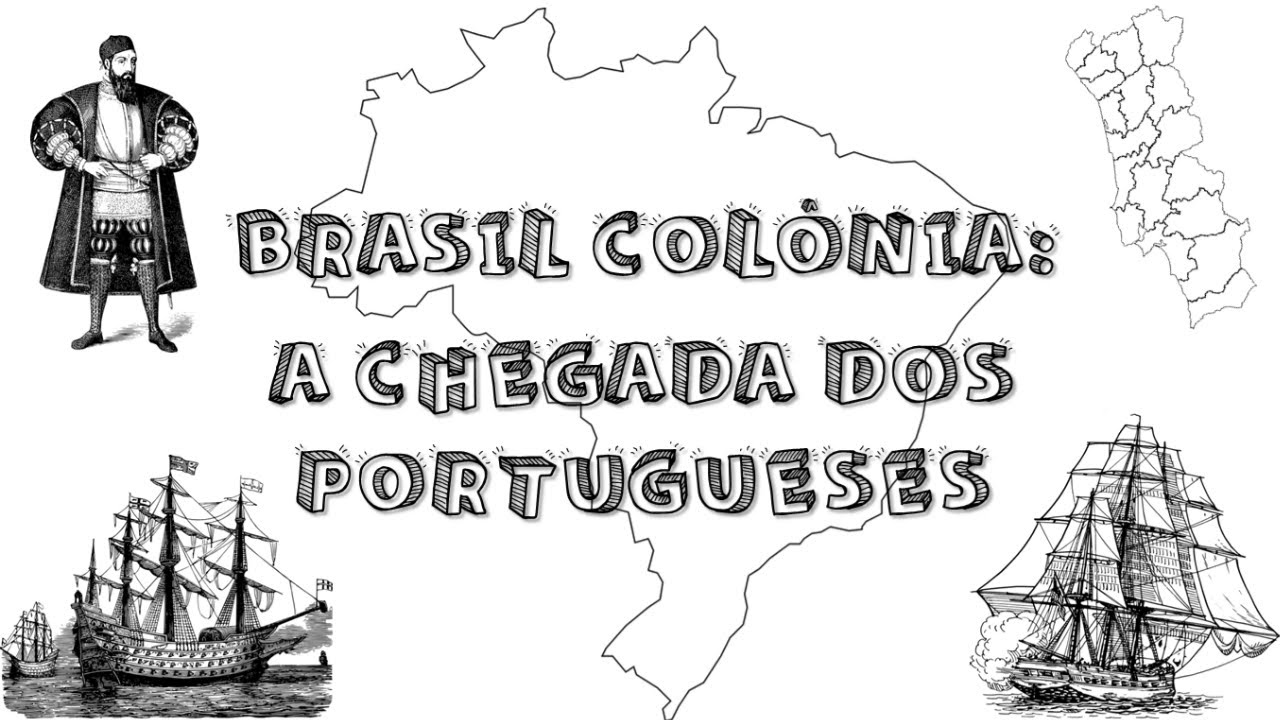Caramuru, de Santa Rita Durão - Resumo com Mapa Mental
Summary
TLDRThe video explores the epic 'Caramuru' by Santa Rita Durão, a 1781 narrative about Diogo Álvares Correia, a Portuguese man shipwrecked in colonial Brazil. After being captured by the Tupinambá tribe, Diogo forms an alliance with the leader Gupeva, eventually becoming a revered figure among the indigenous people. He falls in love with Paraguaçu, Gupeva’s daughter, and together they fight against enemies. The story blends heroic battles, colonial struggles, and cultural exchanges, reflecting the early European colonization of Brazil, with Diogo and Paraguaçu symbolizing the alliance between the indigenous and European worlds.
Takeaways
- 😀 Diogo Álvares Correia, known as Caramuru, is a Portuguese shipwreck survivor who becomes a key figure in early Brazilian colonial history.
- 😀 The Tupinambá tribe, initially hostile, captures Diogo and his companions, but an unexpected battle allows them to escape.
- 😀 Diogo gains the admiration of Gupeva, the Tupinambá leader, after showing the protective power of his armor and gun.
- 😀 Diogo is nicknamed 'Caramuru' ('Son of Thunder') after using his musket to frighten the indigenous people with its loud noise.
- 😀 Diogo falls in love with Paraguaçu, Gupeva’s daughter, who is already familiar with the Portuguese language and culture.
- 😀 Jararaca, an enemy indigenous figure, opposes Diogo and Paraguaçu’s relationship, fearing the negative impact of colonization on his people.
- 😀 A large battle ensues between Diogo and allied tribes against Jararaca’s forces, with Diogo emerging victorious.
- 😀 Diogo initially plans to return to Portugal, but Paraguaçu accompanies him, marking a significant cultural and personal union.
- 😀 Tragically, Moema, an indigenous woman who also loves Diogo, drowns trying to reach his departing ship, highlighting the emotional depth of the story.
- 😀 Diogo and Paraguaçu are received by King Henry I and Queen Catherine de' Medici in France, where Paraguaçu is baptized, symbolizing the union of indigenous and European cultures.
Q & A
Who is the protagonist of the epic 'Caramuru'?
-The protagonist of 'Caramuru' is Diogo Álvares Correia, a Portuguese man who becomes a key figure in the colonization of Brazil.
What is the significance of Diogo Álvares Correia's nickname 'Caramuru'?
-'Caramuru' means 'son of thunder,' a name given to Diogo after he uses his musket to scare the indigenous people, which they interpret as the sound of thunder.
How does Diogo's relationship with the Tupinambá tribe evolve throughout the story?
-Initially captured by the Tupinambá tribe, Diogo forms an alliance with their leader, Gupeva, after impressing them with his armor and weapon. He later becomes highly respected among them.
What role does Paraguaçu play in the epic?
-Paraguaçu, the daughter of the Tupinambá leader, falls in love with Diogo. She is an important character who symbolizes the intersection of European and indigenous cultures, eventually marrying Diogo and converting to Christianity.
How does Jararaca, an antagonist in the story, challenge Diogo and his allies?
-Jararaca, an indigenous man who opposes Diogo's relationship with Paraguaçu, forms an alliance with other tribes to fight Diogo. He sees Diogo as a threat to indigenous autonomy and foresees the negative consequences of colonization.
What are the prophetic visions Paraguaçu experiences, and how do they relate to Brazilian history?
-Paraguaçu has prophetic visions that foresee the future invasions of Brazil by the French and the Dutch. These visions symbolize her awareness of the coming struggles between indigenous populations and European colonial powers.
What role does religion play in the narrative of 'Caramuru'?
-Religion plays a significant role, especially Christianity, as Diogo seeks to spread Christian teachings among the indigenous people. Paraguaçu is baptized into Christianity, symbolizing the cultural and religious changes brought by European colonization.
What is the significance of the ritualistic cannibalism described in the story?
-The ritualistic cannibalism practiced by the Tupinambá tribe is a key cultural element in the story, representing the stark contrast between European and indigenous worldviews, as well as the threat to indigenous identity posed by colonization.
What is the ultimate fate of Diogo and Paraguaçu after they marry?
-After their marriage, Diogo and Paraguaçu are portrayed as symbols of the alliance between Europeans and indigenous peoples. However, their story also represents the beginning of colonization and the cultural shifts that would define Brazil's future.
How does 'Caramuru' reflect the broader theme of colonization in Brazil?
-'Caramuru' highlights the complex dynamics of colonization, where European influence and indigenous cultures collide. Diogo, as an intermediary, represents the European viewpoint, while Paraguaçu embodies the indigenous experience and the prophetic awareness of future invasions.
Outlines

This section is available to paid users only. Please upgrade to access this part.
Upgrade NowMindmap

This section is available to paid users only. Please upgrade to access this part.
Upgrade NowKeywords

This section is available to paid users only. Please upgrade to access this part.
Upgrade NowHighlights

This section is available to paid users only. Please upgrade to access this part.
Upgrade NowTranscripts

This section is available to paid users only. Please upgrade to access this part.
Upgrade NowBrowse More Related Video

BRASIL PRÉ-COLONIAL - O "DESCOBRIMENTO" DO BRASIL - RESUMO DESENHADO

BRASIL COLÔNIA: A CHEGADA DOS PORTUGUESES

Emperor Pedro I of Brazil

Quinhentismo - LITERATURA | AULÃO

History of Ceará - Class 1 - PMCE and CBMCE 2025 Contest - Colonial Period: Occupation of the Ter...

Revolta da Cachaça - REVOLTAS NATIVISTAS #2
5.0 / 5 (0 votes)